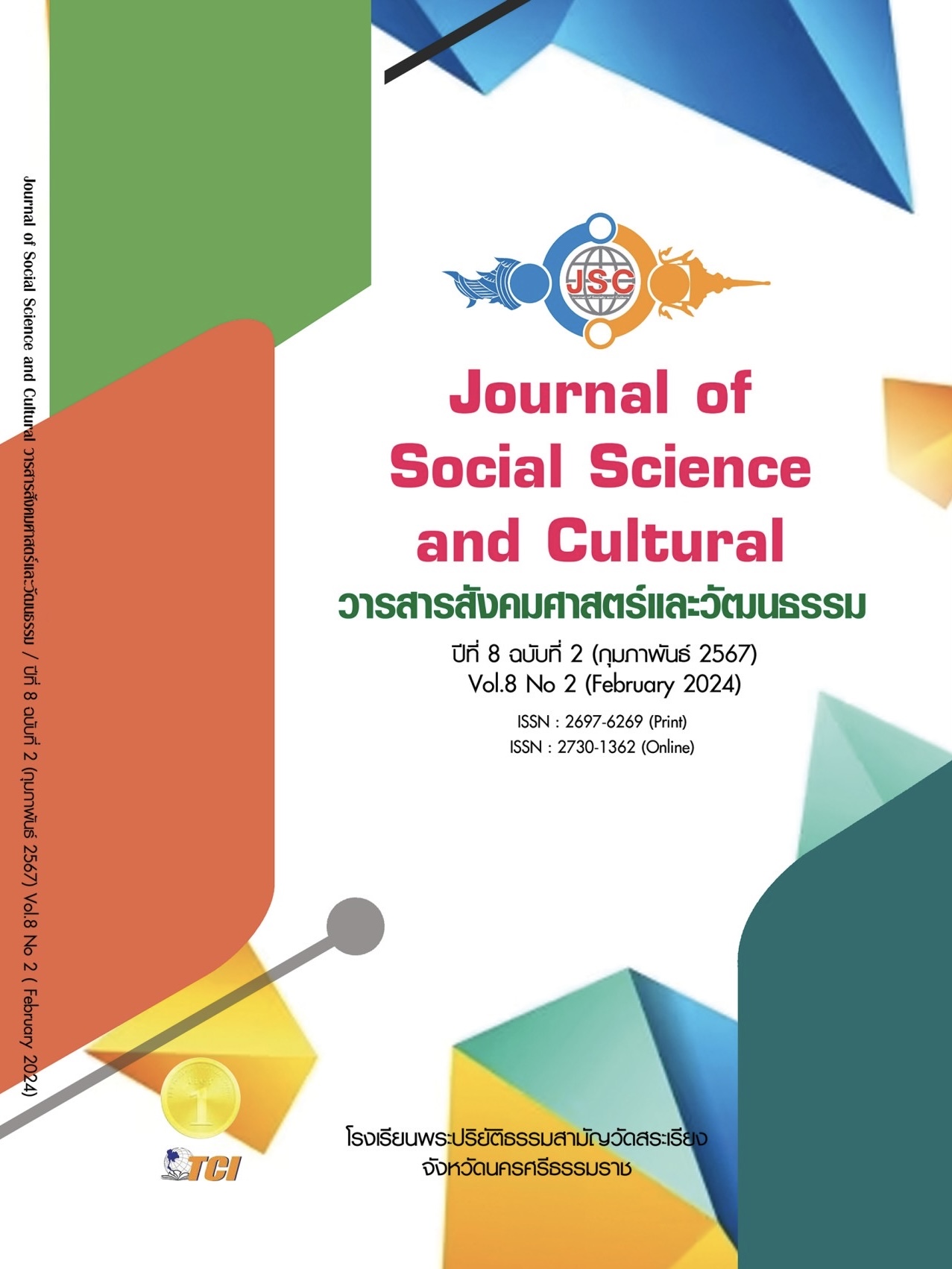THE RESULTS OF LEARNING MANAGEMENT IN A SEMERC MODEL IMPACT ON ACADEMIC PERFORMANCE AND TABLE TENNIS SKILLS OF GRADE 7 STUDENTS
Main Article Content
Abstract
This research aims to: 1) compare the academic performance in knowledge of first-year high school students, 2) compare the table tennis skills of first-year high school students, and
3) compare the satisfaction levels of first-year high school students towards learning management using the SEMERC Model. The sample group consists of 70 randomly selected first-year high school students from Satree Sathaban Banphean Bamphen School, using cluster sampling. The sample is divided into two groups: 35 students learning with the SEMERC Model and 35 students learning through conventional methods. The research tools used include knowledge assessment forms, table tennis skills assessment forms, attitude assessment forms, and satisfaction assessment forms. Data analysis involves the use of statistical measures such as mean, standard deviation, and statistical hypothesis testing. The research findings are as follows: There is a statistically significant difference in knowledge about table tennis before and after learning among first-year high school students using the SEMERC Model. The table tennis skills of first-year high school students in the experimental group are significantly better after learning compared to before learning, with a statistical significance level of .01. There is a significant difference in satisfaction levels among first-year high school students in all aspects after learning with the SEMERC Model, with a statistical significance level of .01. The research findings conclude that managing learning through the SEMERC Model format can effectively enhance learning outcomes in both knowledge and skill table tennis.
Article Details
References
กระทรวงศึกษาธิการ. (2551). หลักสูตรแกนกลางการศึกษาขั้นพื้นฐานพุทธศักราช 2551. กรุงเทพมหานคร: องค์การรับส่งสินค้าและพัสดุภัณฑ์.
กุลิสรา จิตรชญาวณิช. (2562). การจัดการเรียนรู้. กรุงเทพมหานคร: จุฬาลงกรณ์มหาวิทยาลัย.
ทิศนา แขมมณี. (2560). รูปแบบการเรียนการสอน: ทางเลือกที่หลากหลาย. กรุงเทพมหานคร: สำนักพิมพ์จุฬาลงกรณ์มหาวิทยาลัย.
ทิศนา แขมมณี. (2561). ศาสตร์การสอน: องค์ความรู้เพื่อการจัดกระบวนการเรียนรู้ที่มีประสิทธิภาพ. (พิมพ์ครั้งที่ 22). กรุงเทพมหานคร: สำนักพิมพ์จุฬาลงกรณ์มหาวิทยาลัย.
ภูฟ้า เสวกพันธ์. (2562). การศึกษาแบบเรียนร่วม: ปฏิบัติการขั้นสูงในศตวรรษที่ 21. กรุงเทพมหานคร: สำนักพิมพ์จุฬาลงกรณ์มหาวิทยาลัย.
ล้วน สายยศ และอังคณา สายยศ. (2553). เทคนิคการวิจัยทางการศึกษา. (พิมพ์ครั้งที่ 11). กรุงเทพมหานคร: สุวีริยาสาส์น.
วิทยากร เชียงกูล. (2548). เรียนลึก รู้ไว ใช้สมองอย่างมีประสิทธิภาพ. กรุงเทพมหานคร: อมรินทร์พริ้นติ้งแอนด์พับลิชชิ่ง.
สุนันท์ หิรัตพรม. (2561). การพัฒนาชุดกิจกรรมการเรียนรู้เทเบิลเทนนิสตามแนวการเรียนรู้ร่วมมือ เทคนิค TGT ชั้นมัธยมศึกษาปีที่ 1. วารสารมหาวิทยาลัยราชภัฏร้อยเอ็ด, 12(2), 96-109.
Bergmann, J. & Sams, A. (2012). Flipped Your Classroom Reach Every Student in Every Class Every Day. United States of America: ASCD.
Gagne, R. (1970). The Condition of Learning. (2nd ed). New York: Rinekert and Winstin, Inc.
Likert, R. (1967). The Method of Constructing and Attitude Scale. In Reading in Fishbeic, M (Ed.), Attitude Theory and Measurement. New York: Wiley & Son.
Subban, P. (2006). Differentiated instruction: A research basis. International. Education Journal, 7(7), 935-947.
Tomlinson, C. (2001). How to Differentiate Instruction in Mixed-Ability Classrooms. (2nd ed). Virginia USA: Association for Supervision and Curriculum Development Alexandria.


